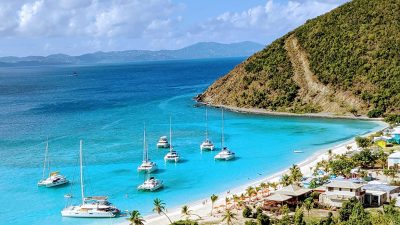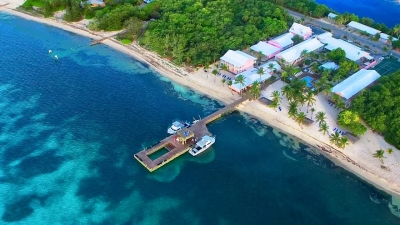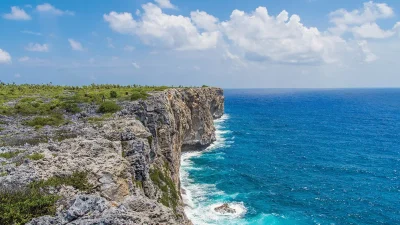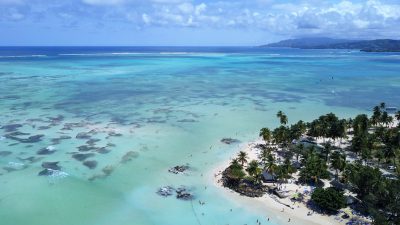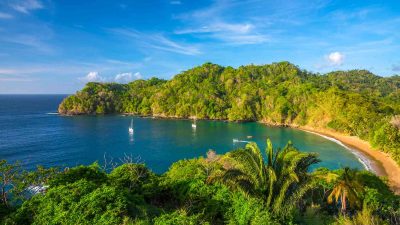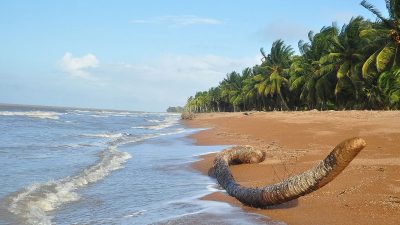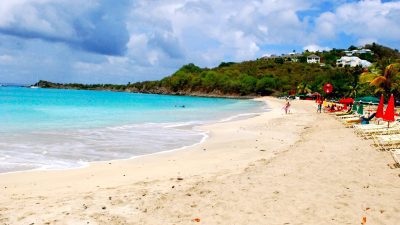Thinking of snorkeling in Bermuda with kids? Yes, you can snorkel right from the beach in Bermuda! Despite the island’s lack of full-size car rentals and the occasional challenge of ocean conditions, Bermuda is an unforgettable destination for family snorkeling. From pink sand beaches with shallow reefs to shipwrecks just offshore, this Atlantic gem offers some of the healthiest and most accessible coral systems in the world.
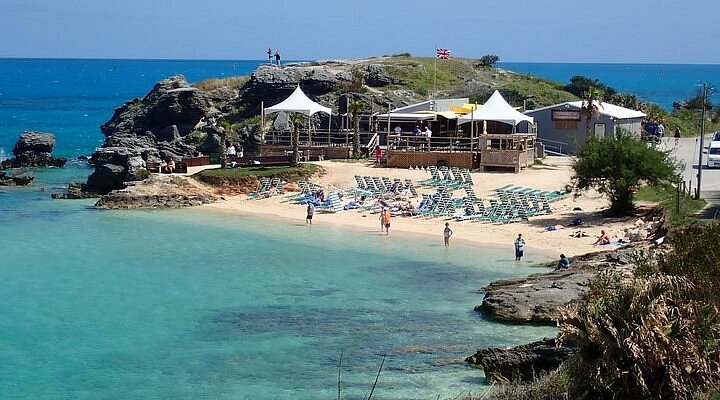
And while boat tours to the island’s outer reefs are incredible, they’re not always included in standard excursions — so it pays to plan ahead and ask the right questions. We’ve rounded up the best beaches for snorkeling in Bermuda with kids, with practical tips for safe exploration, local conditions, and what makes Bermuda’s underwater world so unique.
Why Snorkeling in Bermuda with Kids is Great for Families
Beautiful, Accessible Beaches
Most of Bermuda’s best snorkeling spots are right off the beach — no long hikes, boat rides, or expensive gear needed.
Healthy Reefs, Big Fish
Despite its northern location, Bermuda’s shallow reefs are thriving. You’ll often see larger fish and coral formations here than in the Caribbean.
Always a Calm Spot Somewhere
Because of the island’s shape and changing wind patterns, you can usually find a calm beach no matter the day. Just check wind direction and plan accordingly.
Friendly Locals
Bermudians are some of the warmest people we’ve met — and they’re more than happy to point out their favorite local snorkeling spots.
Important Tips for Safe Snorkeling in Bermuda with Kids
- Reefs can be far from shore – always swim with a buddy and wear a brightly colored snorkel vest.
- Watch for boats and jet skis, especially near inshore reefs.
- Stay mindful of currents and waves, especially when snorkeling beyond protected bays.
- Check tide times – some shallow spots are best at high tide.
Best Time to Visit Bermuda for Snorkeling
- June is ideal — warm but not too hot, low risk of hurricanes, minimal algae bloom, and calm seas.
- Avoid February & March – waters are cold, and winds are strongest.
- Winter snorkeling is possible (and visibility is great), but you’ll need a wetsuit, and many boat tours shut down.
Water & Weather Conditions to Know
- Water temps:
- 60s°F (Dec–Apr) – wetsuit season
- 70s°F (May, June, Oct, Nov) – great for most families
- 80s°F (July–Sept) – warmest water, but visibility may drop due to algae
- Visibility: Best early summer or after a storm has cleared the water. Avoid low tide if snorkeling in shallow areas.
- Wind: Highly variable; plan beach visits based on current wind direction. In general, south shore beaches are more exposed, and north shore waters are more protected.
Best Beaches for Snorkeling in Bermuda with Kids
Elbow Beach — Calm Waters & Drift Snorkeling Over Coral Reefs
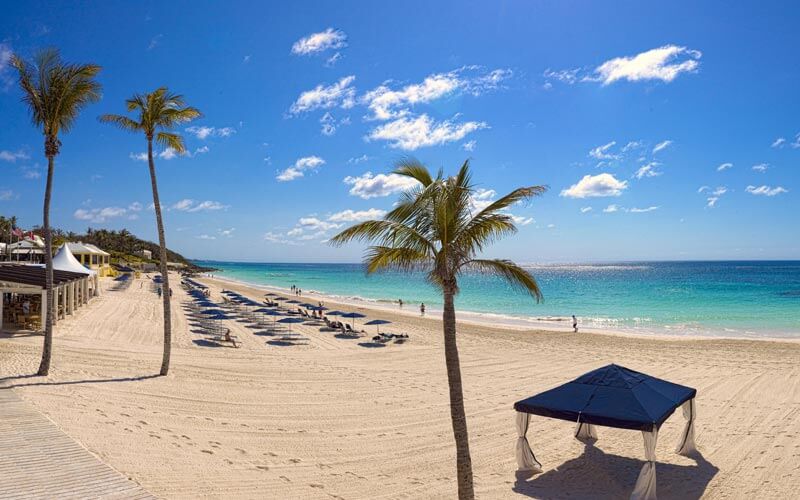
Elbow Beach is one of Bermuda’s most popular beaches — and for good reason. It sits behind one of the island’s largest coral reef structures, which helps break the waves and keeps the waters calm — ideal for kids and beginner snorkelers. On days with light wind and gentle surf, Elbow Beach becomes the perfect spot for what’s known as a drift snorkel. Elbow Beach is a favorite among locals and visitors for good reason—it’s one of the few south shore beaches in Bermuda with easy access to offshore reefs, healthy coral, and a wide range of tropical fish. A long, curving stretch of pink sand, Elbow Beach is ideal for confident swimmers and snorkelers looking to explore a reef system that runs parallel to the shore.
Located in Paget Parish, the public section of Elbow Beach is bordered on both sides by private resorts. The Coral Beach & Tennis Club lies to the west, and the now-closed Elbow Beach Resort to the east. Bermuda’s beaches are public up to the high tide line, so you’re welcome to snorkel the full stretch of shoreline—but keep in mind that resort facilities are for guests only.
What You’ll See
The reef starts about 200 feet offshore and stretches out to a wave-breaking barrier reef more than 1,000 feet away. In the shallows, you’ll find small patch reefs with fire coral, sea fans, and fish like Spanish hogfish and wrasses. Swim farther out for healthier coral growth and more marine activity. The deeper mid-range reefs (in 4–6 feet of water) are the most rewarding for both fish spotting and coral condition. Start at one end of the beach, swim out to the reef, and let the natural current slowly carry you along the shoreline while you float above colorful coral gardens. Keep your eyes peeled for electric blue surgeonfish, grouper, jacks, trumpetfish, and — if you’re lucky — even an octopus tucked into the reef.
Best Areas to Snorkel
- Straight out from the public access stairs is the best bet for most families. The outer reef here is shallower than other parts of the beach, encouraging strong coral growth and fish activity.
- Right side reefs (toward Coral Beach) are more expansive, but coral health declines slightly the farther you go.
- Closer patch reefs in 2–7 feet of water offer an easier swim but reduced visibility and fewer fish—still good for younger snorkelers or those staying near shore.
If the conditions are calm and you’re feeling confident, consider a one-way drift snorkel along the public section of beach. Enter at one end and exit at the other, swimming with the current instead of against it. Check wind and wave direction before committing—avoid snorkeling here if winds are strong from the south or east, as this stirs up waves and current that can make it dangerous.
Water Entry
The entry is sandy all along Elbow Beach, making it easy to walk in barefoot. Choose a spot free of nearshore rocks so you can float and slip on your fins without trouble.
Conditions & Timing
Elbow Beach faces south and is exposed to wind and swell. Skip it on windy days from the south or east. In summer, visibility can vary, but it’s generally better farther out from the beach.
Getting There
- By Car or Scooter: From South Road in Paget Parish, turn onto Tribe Road 4B (look for signs for Elbow Beach Park). Follow it to the end, park your scooter, and take the stairs down to the beach. From the west, it’s a sharp right; from the east, continue straight as South Road curves away.
- By Bus: Take Route #7 from Hamilton or Dockyard. The bus stop is just east of Tribe Road 4B. Follow the sidewalk to the turnoff and down the hill to the beach stairs.
Facilities
- Composting toilet and trash can near the parking area
- No changing rooms or full bathrooms on site
- Seasonal lifeguards may be present
Bonus for parents: Elbow Beach is also close to several family-friendly restaurants and attractions. After your swim, take a short walk to the Masterworks Museum of Bermuda Art, just a mile away. It’s home to over 1,400 artworks by local artists — a great way to introduce kids to Bermudian culture and creativity between beach adventures.
Church Bay — Shallow Reefs & Calm Waters for Easy Snorkeling
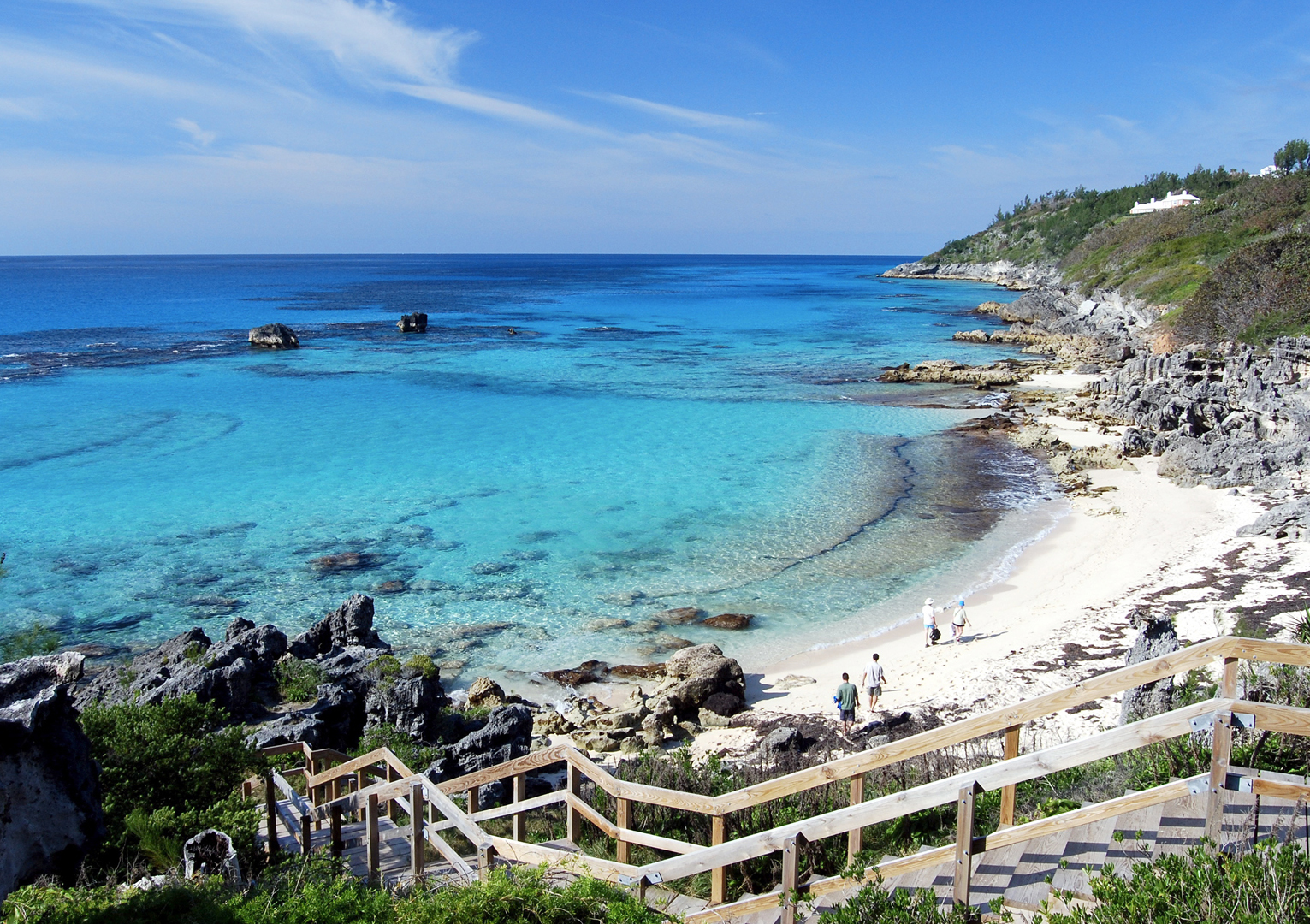
Tucked into a pretty cove on Bermuda’s scenic South Shore, Church Bay is a snorkeler’s paradise and one of the top places for snorkeling in Bermuda with kids. Backed by lush green cliffs and fronted by soft pink sand, this beach feels like a secret getaway — but it’s well-loved for good reason. It’s a favorite among both locals and travelers who are willing to swim out a bit for the best marine life. Set in Southampton Parish, Church Bay Park sits on a hill overlooking the turquoise bay. The park includes shaded picnic areas, restrooms, and a seasonal concession stand offering chair, umbrella, and snorkel gear rentals. It’s a scenic spot for a family outing, even if not everyone plans to snorkel.
Just steps from the shore, a network of shallow reefs offers fantastic snorkeling in calm, clear waters. These coral formations help shelter the bay from ocean swells, making it a safe and accessible option for kids, beginners, and anyone new to snorkeling. The reefs are close to shore and easy to reach, so even young snorkelers can explore without swimming far.
What You’ll See
Expect to see a variety of colorful reef life, from parrotfish and angelfish to wrasse and butterflyfish darting between the coral. The tumbled rocks at either end of the beach are especially rich in marine activity — great spots to float slowly and observe the underwater action.
The shallows are home to small reef fish, but for the best snorkeling, you’ll want to swim diagonally out to the right—toward the inside of the visible boiler reefs and rock formations. Along this route, the seafloor ranges from 3–8 feet deep at first, and then opens into coral canyons reaching 15 feet deep, with plenty of fish and more vibrant coral structures. Keep an eye out for angelfish, wrasses, and parrotfish weaving through the formations.
If conditions are calm, advanced snorkelers can explore beyond the boiler reefs to the deeper outer reef, ranging from 8–25 feet. This area is home to larger coral heads and occasional schools of snapper or jacks, though fish are slightly less concentrated. Be cautious—if there’s any wave action, skip this area. Sharp rocks, strong surges, and breaking waves make it dangerous even for experienced swimmers.
Important: Avoid standing on or touching the boiler reefs. These structures are delicate and support an array of marine life that can be damaged by fins or careless contact. Plus, strong waves can sweep swimmers onto the rocks, leading to injury.
Water Entry
The entrance is sandy but comes with a few quirks. A rock shelf stretches along the shoreline, which may require stepping over at low tide. Boulders both in and out of the water are also present—watch your step. Entry is manageable in bare feet, and once you’re deep enough to float, it’s easy to slip on fins.
Conditions & Timing
This beach faces south, so wave action is heavily influenced by southern winds. On windy or rough days, skip Church Bay and opt for a more sheltered location. But on calm days, it’s among Bermuda’s top snorkeling spots for intermediate and confident swimmers.
Getting There
- By Car or Scooter: From South Road in Southampton Parish, look for the Church Bay Park sign between the Middle Road junction and Church Road intersection. Turn into the one-way entrance and follow the small road left to the cycle parking lot. From there, a long wooden stairway takes you down to the beach.
- By Bus: Church Bay is served by Bus #7 from Hamilton or Dockyard/Somerset. The bus stop is just east of the park, followed by a short walk along a trail to reach the stairs.
Facilities
- Shaded picnic areas
- Restrooms and trash bins
- Seasonal gear rentals (snorkels, umbrellas, chairs)
- Concession stand (seasonal)
Parent-friendly perks:
- Church Bay Park overlooks the beach and offers shady picnic areas, public restrooms, and space to relax.
- A seasonal concession stand rents snorkel gear and sells snacks — super convenient if you’re traveling light.
- Parking is available at the top of the path, but be prepared for a short downhill walk to reach the sand (strollers may be tricky here).
While Church Bay’s reef-filled waters are best suited for calm-weather days (waves can occasionally pick up), on the right day, it’s one of the most rewarding shore snorkeling spots in Bermuda — especially for families who want big rewards without needing to book a boat tour.
Snorkel Park Beach — Easy Access for Cruise Families & First-Time Snorkelers
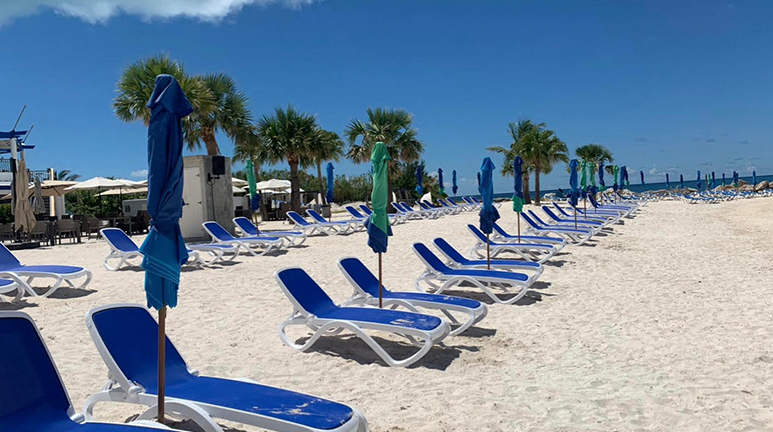
Located right at the Royal Naval Dockyard, Snorkel Park Beach is one of the most convenient spots for snorkeling in Bermuda with kids — especially if you’re visiting by cruise ship. Just a short walk from the dock, this small, sandy beach is protected by breakwaters and offers calm, shallow water that’s ideal for young kids and first-time snorkelers. It offers full amenities including restrooms, showers, food and drink service, and a dedicated baby beach for young children. There’s also a rental center with snorkel gear, beach chairs, umbrellas, pedal boats, and paddleboards, plus options for snuba and jet-ski tours.
While Snorkel Park promotes its “crystal clear waters,” visibility can vary considerably depending on conditions. The close proximity of large cruise ships means propeller activity can stir up sediment, especially on busy port days, reducing underwater clarity and sometimes impacting marine life.
What You’ll See
The most rewarding snorkeling area lies just outside the break in the rock wall on the left side of the beach. There, you’ll find shallow patch reefs between 2–8 feet deep. These reefs host soft corals, fire corals, and a moderate variety of fish, including small reef dwellers and the occasional anemone. Because the area is shallow, visibility is still decent even on cloudier days—though you may notice sediment settled on the coral and some damage likely caused by human traffic. Please take care not to touch or kick the coral with fins.
The sandy shallows to the right of the rock wall are less biodiverse, though you may still spot a few scattered fish and marine creatures tucked into rocky pockets. This area is best for younger children or beginners looking for calmer waters.
Things to Know
- Entry: Sandy and gentle, suitable for barefoot walking—though stirred-up sand can reduce visibility in shallows.
- Crowds: The beach is small and often packed, especially when cruise ships are docked.
- Vibe: Expect a more commercial, party-like atmosphere with music, a beach bar, and frequent watercraft traffic nearby.
- Best Conditions: If winds are coming from the north or west and the waves are high, consider skipping this beach—choppy waters and cloudiness can make snorkeling unpleasant.
- Caution: Always watch for jet skis, paddleboards, and boat traffic when snorkeling outside the rock wall.
Getting There
Snorkel Park is easy to reach for those staying nearby or visiting via cruise. Drive or walk to the end of Dockyard Road, where it becomes one-way and loops around the point. Just before the road turns right, look for the tunnel through the fort wall that leads to Snorkel Park Beach. There’s scooter parking and a water fountain at the entrance.
While the reef life here isn’t as abundant as Bermuda’s wilder southern shore beaches, Snorkel Park still provides a gentle, safe environment for little swimmers to experience the ocean for the first time. Expect to spot a few fish near the rocks and breakwater, along with sea urchins, and the occasional starfish.
Why it’s great for families:
- Super close to the cruise terminal — no taxis or travel time required
- Calm, enclosed waters perfect for young swimmers
- Lifeguards on duty during the busy season
- Snorkel gear and float rentals available right on the beach
- On-site restaurant, bar, and bathrooms
- A small entry fee includes access to chairs, umbrellas, and other amenities
Snorkel Park also features additional activities like jet ski rentals, paddleboarding, and beach volleyball — a big plus if your family wants to mix some adventure with relaxation. There’s even live music and beach events in the evenings during peak season, making it a fun hangout spot after your snorkeling session.
Parent Tip:
Because of its cruise-port location, Snorkel Park can get crowded on ship days. If you’re looking for quiet snorkeling, head to Elbow Beach or Church Bay. But if you want convenience, comfort, and a low-key ocean experience for the kids — Snorkel Park is hard to beat.
Tobacco Bay — Shallow Waters, Reef Spires & Revolutionary History

Tobacco Bay isn’t just one of Bermuda’s best-known beaches — it’s also one of its most historically significant. Back in 1775, this peaceful cove played a bold role in the American Revolutionary War during the legendary Gunpowder Plot. A group of Bermudians sympathetic to the American cause secretly smuggled over 100 barrels of British gunpowder from St. George’s to waiting ships at Tobacco Bay, helping fuel the revolution.
Today, Tobacco Bay is far less secret — but still full of excitement, especially underwater.
This protected lagoon reef is a great choice for families and beginner snorkelers. The warm, shallow waters are calm on most days, and the bay is surrounded by towering limestone rock formations that create an almost otherworldly snorkeling environment. These rocky spires and ledges provide shelter to a wide variety of marine life, which kids can explore without venturing far from shore.
What you’ll see:
- A vibrant mix of parrotfish species, including rare Rainbow and Midnight Blue varieties
- Curious cocoa damselfish, who aren’t shy about swimming right up to snorkelers
- Slow-gliding angelfish, darting wrasse, and colorful sea fans waving in the current
- Spire-like reefs and scattered coral heads at multiple depths, offering visual interest for all ages
Why it works for families:
- Calm, shallow water ideal for younger kids or those new to snorkeling
- Short swim distances — you don’t need to go far to see fish
- On-site snorkel gear rentals, restrooms, and a snack bar
- A scenic location near the historic town of St. George’s, perfect for a half-day combo trip
What parents should know:
Because of its popularity, Tobacco Bay can get crowded, especially when cruise ships are in port. The central part of the bay may also have less visibility due to sediment and occasional litter from tourist traffic. For the best snorkeling, head toward the eastern side of the bay, just past the main swimming area, where the water clears and marine life is more abundant.
Gravelly Bay — Off-the-Beaten-Path Snorkeling with Rare Marine Life
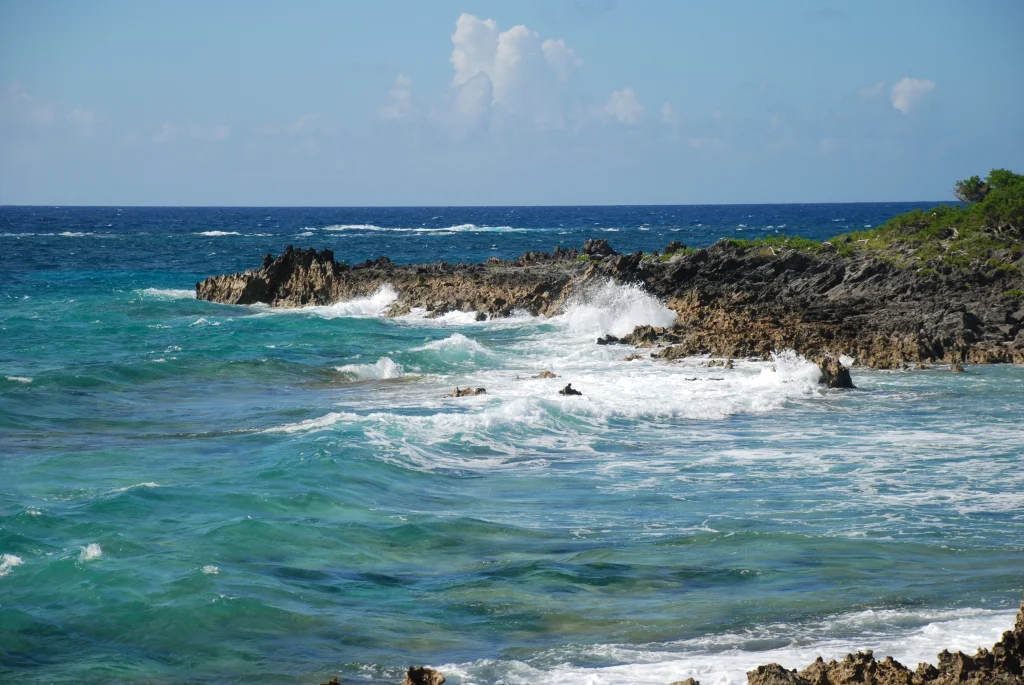
Looking for a snorkeling adventure that feels a little more wild and untouched? Gravelly Bay offers exactly that. Tucked away from Bermuda’s more well-known beaches, this secluded spot is home to one of the island’s most vibrant and healthy reef systems — if you’re up for a bit of effort to reach it.
This is a rim reef, which means excellent underwater visibility, strong wave action, and plenty of hard corals like brain coral and star coral carpeting the seafloor. The reef here has remained remarkably pristine, in part because it’s less visited — which also means more fish and less crowding.
What you’ll see:
- Rare species like eels, trumpetfish, and porgies
- Huge schools of parrotfish, some of the largest you’ll see around Bermuda
- Juvenile yellowtail damselfish covered in electric blue spots
- Colorful hard corals and dynamic reef topography
Why it’s a hidden gem for families (with older kids):
- Less foot traffic = healthier reef and more marine life
- A chance to spot unusual sea creatures not commonly seen at more crowded beaches
- Great for families with strong swimmers or adventurous teens
What parents should know:
Gravelly Bay is not ideal for young children or beginner snorkelers. There’s no sandy beach nearby, so the reef must be reached either by swimming a moderate distance or navigating over sharp, rocky terrain — water shoes and fins are essential. Wave conditions can be strong, so this spot is best saved for calm-weather days and confident swimmers.
If your family is up for a more rugged, rewarding snorkeling experience, Gravelly Bay offers an underwater world that’s rarely seen — and well worth the effort.
Cooper’s Island Nature Reserve
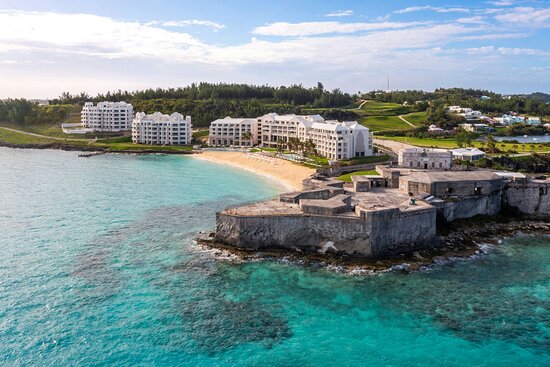
Type: Rim reef
Best for: Families with younger kids, nature lovers, first-time snorkelers
Visibility: Excellent
Access: Easy beach entry — just swim out from shore
Cooper’s Island is a family favorite not just for its easy access, but also because it’s located within a peaceful nature reserve where the marine environment is carefully protected. Unlike rougher rim reefs, the water here stays calm and incredibly clear, perfect for first-time snorkelers or younger kids who want to try snorkeling close to shore.
The reef itself features brain and mustard hill corals, and though parts of it can be a bit sparse with stretches of bare rock, it’s still home to an exciting array of marine life. Look for quirky creatures like the scrawled trunkfish and the brightly colored puddingwife wrasse—both curious and slow swimmers, making them easy to spot. Darker reef crevices often hide larger schooling fish like snapper and grunts, so don’t forget to peek into the shadows!
Parent Tip: Because it’s part of a nature reserve, Cooper’s Island is a great place to introduce your kids to the importance of marine conservation. The ongoing project to restore West Indian Top Shell populations here is a fun topic to explore with older kids. And since the beach itself is relaxed and uncrowded, it’s also a great spot for a picnic after your snorkel.
Good to Know: The reef isn’t as lush or colorful as others on the island, so come here for the wildlife and the tranquility, not the density of coral formations.
Astwood Park
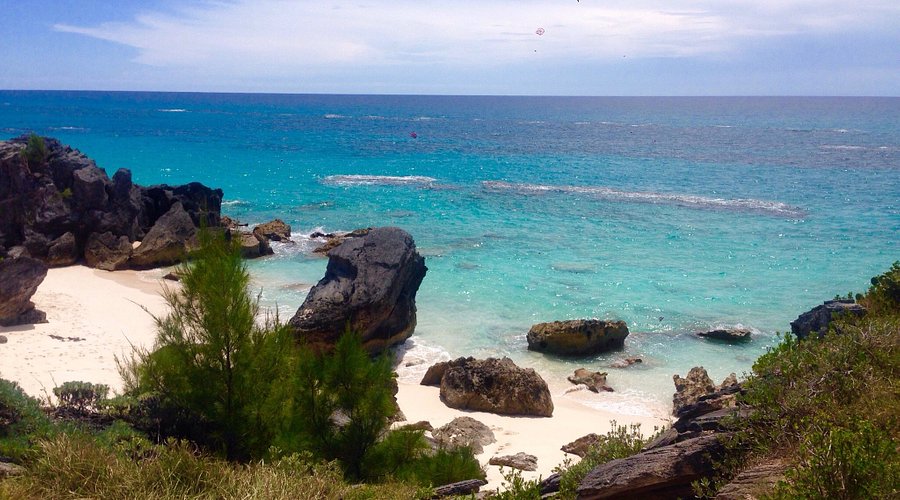
Reef Type: Rim reef
Snorkeling Experience: Adventurous and rewarding
What can you see?
Astwood Park is home to a vibrant rim reef teeming with life. Expect to spot plentiful parrotfish, schools of blue tang, and colorful wrasses darting through the coral. Keep your eyes peeled for the brilliantly blue Blue Chromis, a dazzling damselfish that stands out against the coral backdrop. The reef here is flourishing with hard, flat corals, especially brain coral and golf ball coral, thanks to minimal visitor traffic.
Why families love it:
This is the only snorkeling spot on our list that also offers a park nearby, making it a fantastic pick for families looking to mix playtime and exploration. Spread out a picnic, toss a frisbee, and enjoy the views before or after a dip. The visibility in the water is exceptional, and since the reef is less frequented, you’ll likely have it to yourself.
Family tips:
Astwood Park’s beach is located at the bottom of steep cliffs, so it’s best for families with older kids or confident hikers. Wear sturdy shoes and pack light for the descent. Once there, you’re rewarded with a quiet, uncrowded beach and spectacular underwater views.
North Rock
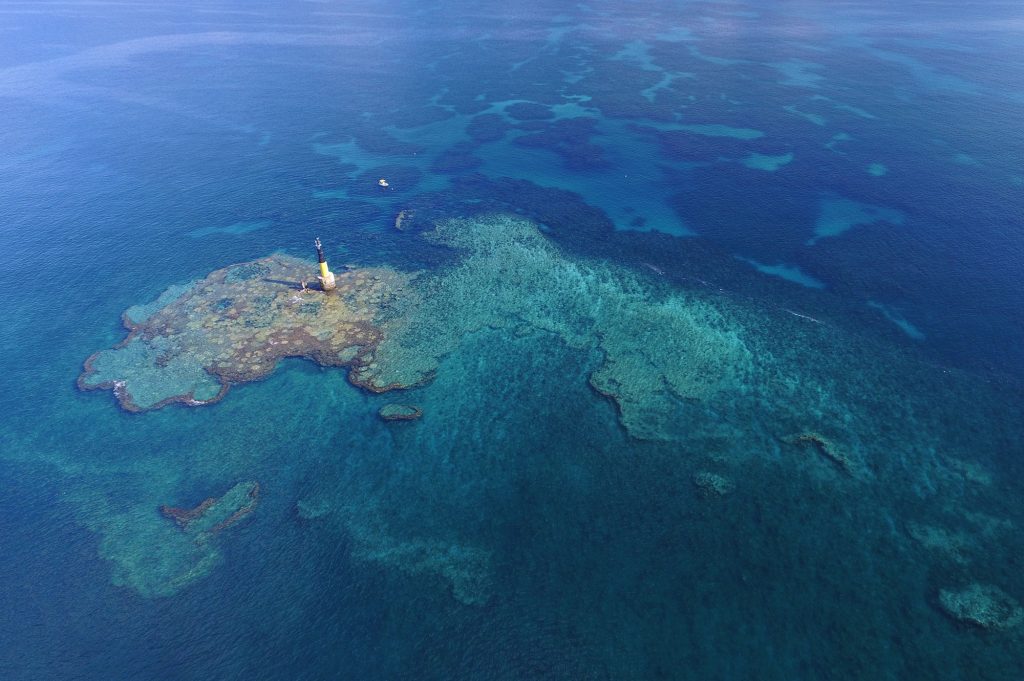
Reef type: Rim reef
Getting there: Boat access only; ~1 hour from shore
If you’re seeking a once-in-a-lifetime snorkeling adventure in Bermuda, North Rock is where you’ll want to be. Marked by a navigational beacon far offshore, this rim reef formed when sea levels rose in the early 1900s. Now submerged, it’s a vibrant underwater ecosystem where all species of Bermuda’s coral can be found thriving together.
What can families see here?
North Rock is bursting with shallow-water reef life—think colorful wrasses, angelfish, and parrotfish—but it also offers the thrilling possibility of spotting larger deep-water visitors like rays, sharks, black groupers, and even the flamboyant scrawled filefish. This blend of shallow reef charm and deep-sea excitement makes North Rock stand out.
Why go:
- Incredible biodiversity: All coral species found in Bermuda are represented here.
- Crystal-clear visibility: Thanks to its distance from shore, the water here is nearly always clear.
- Adventure factor: There’s a real chance of seeing something extraordinary—perfect for older kids and teens with good swimming skills and a sense of adventure.
Good to know for parents:
- You’ll need to join a boat tour, as North Rock is not accessible by land.
- It takes about an hour by boat, and the sea conditions need to be calm—this is not a spot for choppy days.
- The reef is quite large and parts are deep, so this location is best suited for strong swimmers and older kids or teens, though snorkeling in the shallow parts at low tide can still be very rewarding.
- Due to the remoteness, always go with a reputable, safety-conscious tour operator.
Parent tip: If your kids love marine life and are confident in the water, North Rock will be a highlight of their trip. Pack extra snacks, water, and sea-sickness bands for the boat ride.
Blue Hole
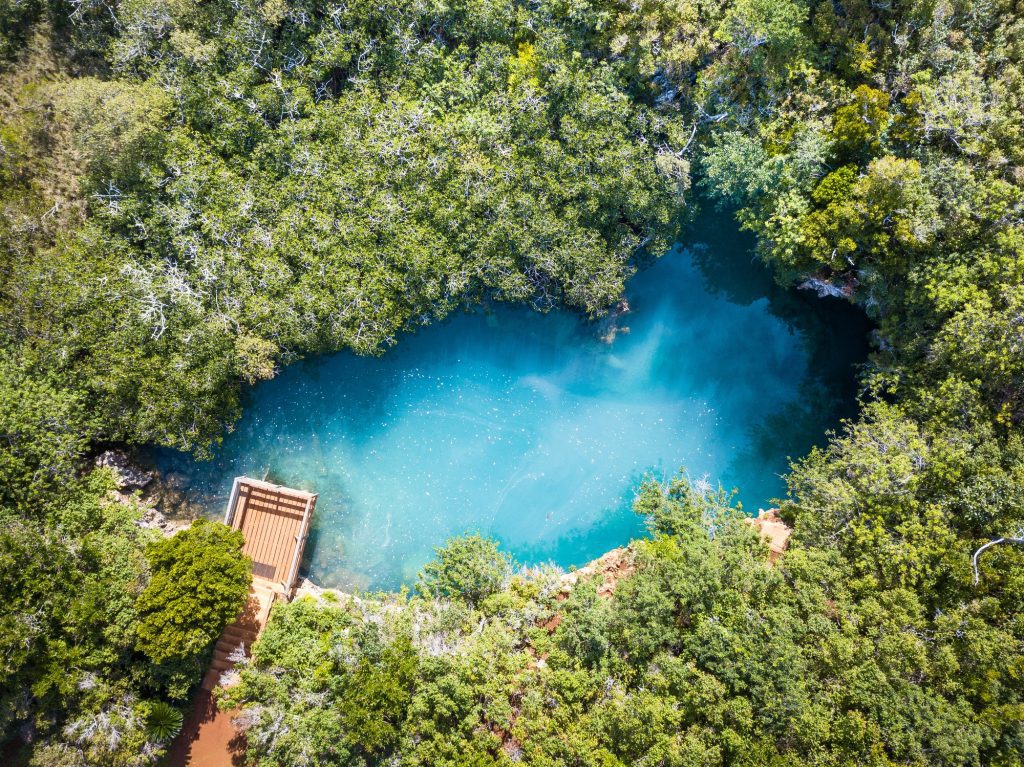
Location: 32°23’20.83 N, 64°53’19.32 W
Reef Type: Terrace and rim reefs
Travel Time from Hamilton: Approx. 40–60 minutes by boat
If your kids are confident snorkelers and you’re looking for a truly unforgettable adventure, Blue Hole is a bucket-list spot. This natural underwater sinkhole opens up into a dramatic cavern surrounded by coral-covered walls that plunge into deep blue water—hence the name. It’s like swimming over the edge of an aquatic cliff, and for older kids or teens, it can feel thrilling and otherworldly.
You’ll likely spot spotted eagle rays cruising gracefully across the sandy bottom, grouper and lobster hiding in the small cave openings, and even nudibranchs if you’re lucky (they’re like the butterflies of the sea). This is also one of the few places where you might see tarpon—large, sleek silver fish that hang motionless in the deeper shadows.
Because of its depth and open-ocean feel, Blue Hole is best visited on a calm day and is recommended for families with older kids who are strong swimmers or comfortable with snorkel vests. You’ll want to go with a guided boat tour that’s familiar with the site, as currents and visibility can vary. Most family-friendly snorkel charters in Bermuda will only visit Blue Hole when conditions are safe.
Family Tip: Bring an underwater camera or GoPro—this is one of the most photogenic underwater spots in Bermuda, and older kids will love capturing the moment. And be sure to prep young snorkelers ahead of time that this spot can feel “deep” compared to nearshore reefs—some may need reassurance even though it’s totally safe when conditions are right.
Western Blue Cut – A Wreck Lover’s Wonderland with a Dash of History
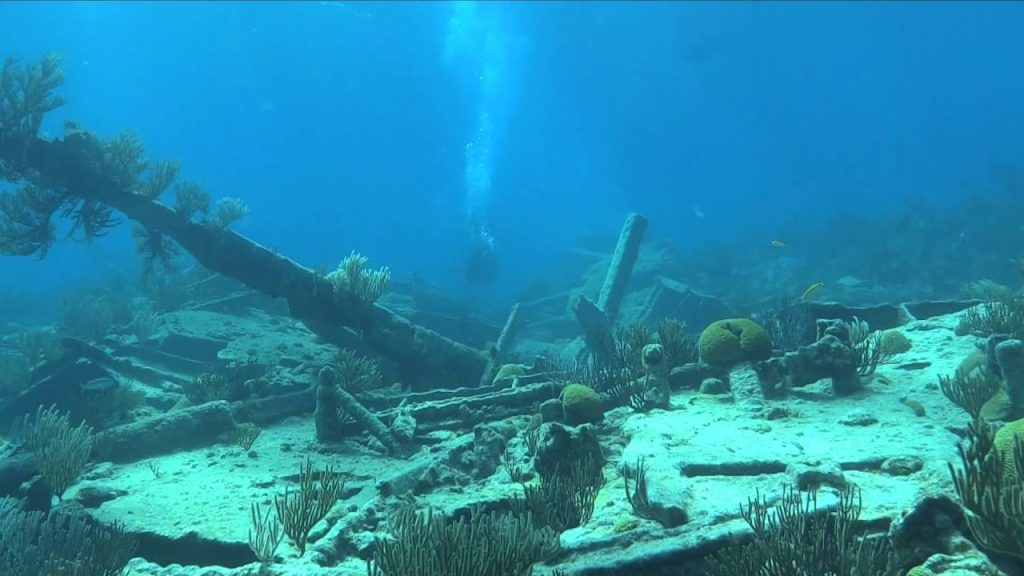
If your family includes little adventurers who love history, fish-spotting, or shipwrecks, Western Blue Cut is one of Grand Cayman’s most fascinating snorkeling areas. Located offshore, this site is home to the remnants of three shipwrecks—the Constellation, Montana, and Lartington—all resting within swimming distance of each other. These wrecks aren’t just eerie and exciting; they’ve become thriving artificial reefs, with rim and terrace coral structures growing alongside the rusty remains.
What makes it special?
Western Blue Cut offers a unique blend of marine life and maritime history. The massive hard corals and metal hulls provide shelter for large fish like groupers, pompano, and jacks, who lurk in the shadows and swim lazily through the wreckage. If your kids are confident snorkelers, they’ll love the challenge of spotting fish darting in and out of hidden nooks—and they might even spy pieces of sunken artifacts still scattered around the area.
Things to keep in mind:
While this spot can be thrilling, it’s best suited to strong swimmers and older kids, especially since some of the wrecks are in deeper waters. Snorkelers won’t be able to explore the full extent of the shipwrecks like divers can, and young or beginner swimmers may find it overwhelming. If you’re visiting with younger kids, this might be more of a site for grownups or teens while the little ones relax on the boat.
Parent Tip:
If you’re joining a snorkel tour that includes this stop, check ahead to see if flotation devices or guides are available. Some charters provide in-water guides who can help kids stay safe while pointing out fish and features of the wrecks.
Best For:
Confident swimmers, teens, and adults with a taste for underwater history and unique marine life.
Final Thoughts on Snorkeling in Bermuda with Kids
Snorkeling in Bermuda with kids can be one of the most rewarding parts of your family vacation — but a little planning goes a long way. From beach access and tide timing to choosing the right boat tour, these tips will help you make the most of Bermuda’s beautiful marine life safely and confidently.
Whether you’re swimming over pink sand, exploring a shipwreck, or floating above giant coral heads, Bermuda offers unforgettable adventures for snorkelers of all ages.
Planning your family trip to Bermuda? These guides can help you make the most of your time on the island:
- Bermuda with Kids: Family Travel Guide
- Best Family Hikes in Bermuda
- Top Rated Family Restaurants in Bermuda
- Best Family Snorkeling in Bermuda
For additional information and context for your trip, it might also help to check out our ranked family travel lists for Bermuda:
- Best Things to Do in Bermuda with Kids (Ranked)
- Best Family Beaches in Bermuda (Ranked)
- Best Family Stays in Bermuda (Ranked)
For more general travel info, visit the Wikivoyage page on Bermuda.


